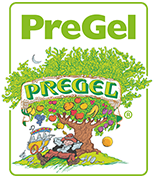In the culinary world, wine and cheese share a special connection to the palate and the plate. This connection can be attributed to their harmonious varieties from complementary regions or simply the feng shui between taste and texture. But the lines are blurring as cheeses are now appearing in desserts. Choosing cheeses and wines can be a lofty endeavor due to the many options between fresh cheese, soft cheese with mold, soft cheese with washed rind, natural rind, blue cheese, unheated pressed, heated pressed and so forth. As the use of cheese in desserts expands, pastry chefs are becoming more and more like sommeliers in a way when it comes to cheese courses.
Most contemporary diners tend to be split on the thought of cheese for dessert – they’re either for it or against it. For the hardcore foodies it’s a sensitive subject, but cheese always wins. Ending a multi-course meal with a glass of sherry and cheese may sound like a social miscue yet it has an extensive history in dining. An aphorism that still stands true today from the 18th Century French epicure Jean Anthelme Brillat-Savarin, “Un dessert sans fromage est une belle à qui il manqué un oeil,” meaning a meal without cheese is a one-eyed beauty. To true cheese aficionados, it is the purest form of savoring the ingredient that is milk.
Dessert cheeses are an ideal ingredient. Servings of single family cheeses, platters of mild and strong or solo artisanal masterpieces can all be found in restaurants around the U.S.Most cheese connoisseurs would be utterly disgraced to consider cream cheese and mascarpone as dessert cheeses – it’s similar to comparing a box of wine to a ’47 Cheval Blanc. There are mindsets that separate cheese into their respective classes just as wine is. According to the International Dairy Foods Association, more than one-third of all milk produced each year in the U.S. is used to manufacture cheese. As the industry continues to grow only a fraction of a percent is used in fine farmstead and artisanal cheeses but that percentage is slated to increase as high demand for better and more sophisticated cheeses grows.
Artisan cheese is so multifaceted. It has given new reign to pastry chefs by providing taste experiences that don’t rely on butter and sugar ridden desserts. What we see now is a full circle appreciation for cheese’s simplicity and complete nature. Most cheeses, even simple ones, are so complex in their biological makeup that chefs and diners alike understand that something so good, so pure, so complex only requires a small amount of enhancements. Given that there are over 900 known cheeses in the world and counting, the possibilities are endless when it comes to how to use it.
Chef/co-owner Daniel Humm of the Michelin 3-star restaurant, Eleven Madison Park in New York City uses cheese as an extensive branch to his creative mind. From picnic baskets filled with beer washed cheese and plum mustard jam to his fromage blanc cheese course inspired by the color yellow. Composed of La Faissette fromage blanc, golden raspberries, apricot, golden currants, pickled cantaloupe, pickled golden beets, yellow beet vinaigrette, yellow Swiss chard and olive oil, it’s a testament to how creative and innovative chefs are becoming with cheese plates. In another spectrum, chef/co-owner Grant Achatz of Alinea in Chicago takes innovative cheese plates even further with his rendition of the all-American classic cheese ball. Composed of a grape sponge sphere coated in Maytag blue cheese powder and filled with walnut milk, port wine gelatin and celery, it is indeed an enlightened view of the traditional cheese plate. Cheese plates themselves are now regularly part of tasting menus and are just as elaborate as any other course. The attention to detail chefs are applying to cheese desserts and cheese plates shows an increasing awareness of how educated diners are and a continued effort to push the boundaries of food.
Understanding cheese plates and dessert cheeses is a pastry chef’s way to show off their savory muscles to their culinary brethren. Because of the food cost per plate and the fact that they’re substantially cheaper than a restaurant running a large cheese program, cheese plates and desserts with cheese incorporated are a great option for today’s pastry chef.
